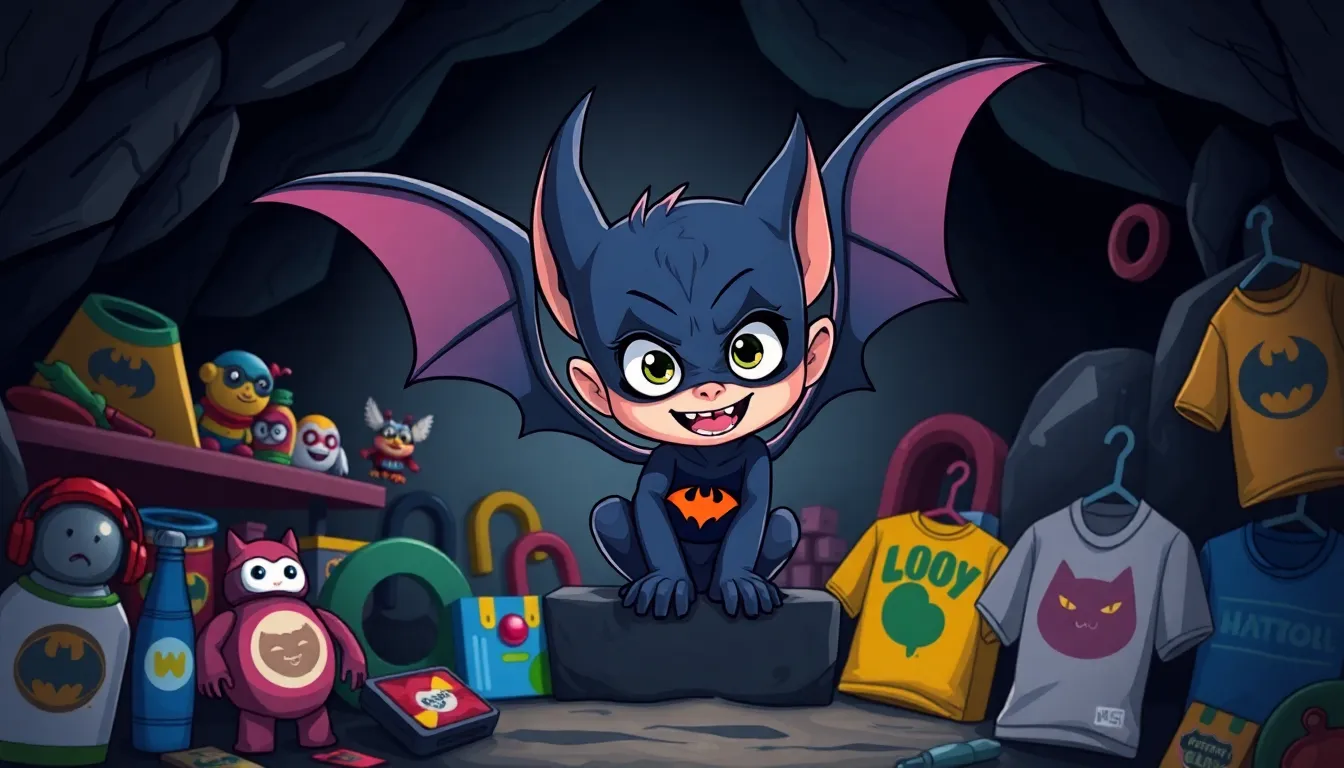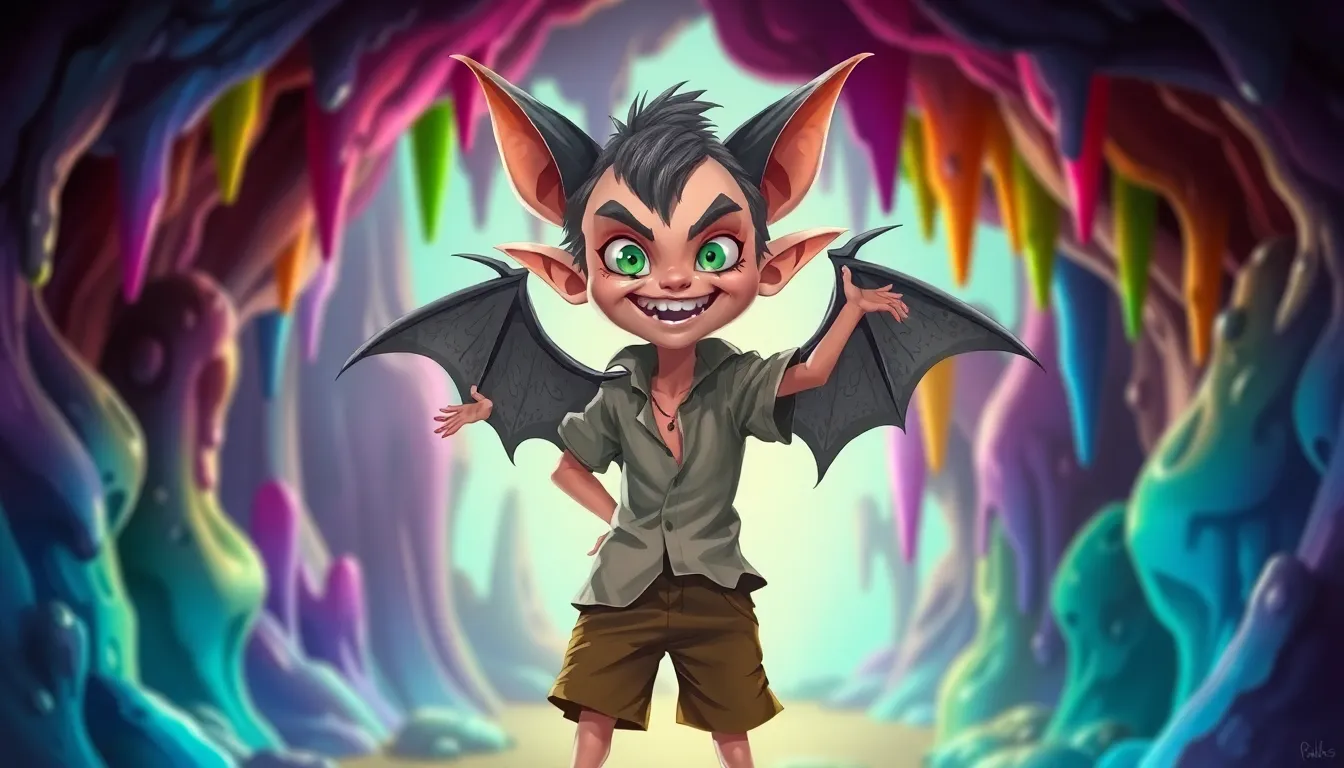In a world filled with mundane headlines, one story soared above the rest: the legendary Bat Boy. This pint-sized creature, who made his debut in the pages of Weekly World News, captured imaginations and sparked endless debates about his existence. Was he a hoax or the real deal? Either way, he became a pop culture phenomenon, blending the bizarre with the hilarious.
As tales of Bat Boy’s adventures spread like wildfire, he transformed from a mere tabloid curiosity into a symbol of the unexpected. Readers couldn’t help but chuckle at his antics, whether he was saving the day or causing chaos. So, why does this oddball character still resonate today? Dive into the whimsical world of Bat Boy and discover how he turned the ordinary into the extraordinary, leaving a legacy that continues to entertain and bewilder.
Table of Contents
ToggleHistory of Weekly World News
Weekly World News debuted in 1979, catering to a niche audience fascinated by sensational journalism. The publication quickly gained notoriety for its outrageous headlines and stories, often blending humor with bizarre themes. Readers encountered tales of aliens, Bigfoot, and supernatural occurrences.
Bat Boy emerged in 1992, showcasing a unique character that captured the imagination of many. This half-boy, half-bat creature became a staple of the tabloid, featuring in various absurd adventures. Fans eagerly awaited each issue, drawn by Bat Boy’s uncanny charm. Over time, his stories evolved, leading to cult status within the media landscape.
The tabloid reached its peak circulation of approximately 1.2 million copies in the mid-1990s. Amidst an ever-changing media environment, the publication experienced shifts, including its closure in 2007. Despite ceasing print publication, the legacy of Weekly World News persists through its online presence and continued cult following.
Noteworthy collaborations and parodies surfaced in pop culture. Television shows and other publications referenced Bat Boy, cementing his status as a cultural phenomenon. The character inspired merchandise, animated shorts, and even theatrical productions, demonstrating his widespread appeal.
Weekly World News remains a key player in the world of tabloid journalism, blending fiction with reality. Its unique brand of storytelling continues to resonate. Readers appreciate its unabashed silliness and creativity, ensuring Bat Boy’s legacy endures in popular culture.
The Bat Boy Phenomenon

Bat Boy emerged as a captivating figure, blending humor and bizarre adventures that intrigued audiences. This unique character transcended his origins, becoming a pop culture icon.
Origin Story
Created in 1992, Bat Boy first appeared in Weekly World News. His story involved a half-boy, half-bat creature discovered in a cave, sparking immediate curiosity. Adored by readers, Bat Boy featured in numerous outlandish tales, including narrow escapes and amusing antics. The character’s offbeat allure contributed to the tabloid’s success, reinforcing the importance of sensationalism in media. This quirky figure found a niche, representing everything eccentric in the world of tabloid journalism.
Cultural Impact
Bat Boy influenced pop culture significantly, inspiring various interpretations and references. Merchandise, including action figures and T-shirts, emerged, showcasing his popularity. Television shows and parodies also included him, demonstrating his reach beyond print media. Iconic for his humorous escapades, Bat Boy became a symbol of the unexpected in storytelling. Despite the closure of Weekly World News in 2007, his legacy endures through online platforms and fan communities. His impact highlights the continuing appetite for outlandish narratives in popular culture.
Media Representation
Bat Boy’s eccentric story resonates throughout media representation, showcasing his unique appeal.
Articles and Cover Stories
Numerous articles featured Bat Boy across various issues of Weekly World News. With striking headlines, he became synonymous with outrageous tabloid journalism. Each cover story explored wild adventures, from capturing aliens to battling monsters. Readers eagerly anticipated his next escapade, fueling his popularity. The combination of humor and absurdity captured public attention, ensuring he remained a focal point in media discussions.
Parodies and References
Bat Boy’s cultural significance inspired countless parodies and references. His distinct character appears in comedic segments on television shows like Saturday Night Live and The Tonight Show. Various online memes further cement his place in pop culture. Notable references include mentions in comic book series and animated programs, highlighting his quirky charm. These parodies demonstrate ongoing fascination with his character, bridging the gap between traditional media and contemporary internet culture.
Legacy of Bat Boy
Bat Boy’s influence persists, shaping pop culture and leaving an indelible mark on the collective imagination. Originating in the Weekly World News in 1992, he captivated audiences with his outrageous exploits. Merchandise featuring Bat Boy, including toys and clothing, emerged, showcasing his widespread appeal.
Television shows regularly referenced or parodied Bat Boy, further embedding him in the cultural zeitgeist. Shows like Saturday Night Live and The Tonight Show delighted in his eccentricity, illustrating his reach beyond print media. Online, meme culture embraced his character, allowing for the continuous spread of his legend through social media platforms.
Fan communities thrive, sharing art and discussions that celebrate the absurdity of Bat Boy’s adventures. Websites dedicated to the Weekly World News often highlight archived stories of Bat Boy, ensuring his tales remain accessible to new generations.
Legacy extends to other media, with comic book series inspired by his unique blend of humor and horror. Adaptations maintain the spirit of Bat Boy’s wild narratives, confirming an ongoing fascination with the character.
Many recognize him as a symbol of the unexpected, embodying the outrageous essence of tabloid culture. Enthusiasts of Bat Boy appreciate his role in challenging perceptions of what narratives can be. Such multifaceted representation contributes to an ongoing dialogue about fantasy and reality in popular storytelling.
Current Relevance
Bat Boy continues to resonate in today’s media landscape. Despite the Weekly World News ceasing print production in 2007, its legacy thrives online, where fan communities actively share stories and artwork featuring the character. Merchandise that includes toys, clothing, and collectibles keeps the Bat Boy spirit alive among enthusiasts.
Cultural references frequently emerge in various forms of entertainment. Numerous television shows integrate Bat Boy into their sketches, allowing audiences to connect with his offbeat persona. Online, memes featuring Bat Boy circulate rapidly, showcasing his adaptability to contemporary digital culture.
Interest in the absurd facilitates Bat Boy’s ongoing relevance. Audiences appreciate the blend of humor and bizarre adventures, finding delight in his escapades that include encounters with aliens and historical figures. His stories prompt discussions on the nature of sensationalism in modern media.
Influence can be traced across different art forms. Comic book adaptations highlight his unique fusion of horror and comedy, expanding his appeal beyond tabloid fame. This evolving presence reflects a persistent fascination with characters that challenge reality.
Fan engagement remains strong. Social media platforms offer forums for sharing interpretations of Bat Boy’s tales, making his adventures accessible to new and returning fans alike. This interactive culture enhances the character’s position in popular storytelling.
Overall, Bat Boy symbolizes the unexpected in narratives, maintaining a cultural foothold decades after his introduction. His quirky charm fosters a conversation about the joy found in the strange and unexplainable.
Bat Boy’s unique charm and eccentricity have ensured his place in pop culture history. From his origins in the Weekly World News to his status as a beloved icon, he showcases the enduring appeal of the bizarre. His adventures continue to entertain and inspire, bridging gaps between generations and media formats.
As audiences seek out the strange and humorous, Bat Boy remains a symbol of the unexpected. His legacy thrives through merchandise, fan art, and cultural references, proving that the fascination with the absurd is far from fading. The character’s ability to evoke joy through the outrageous keeps him relevant in today’s media landscape, inviting new fans to discover his quirky world.



